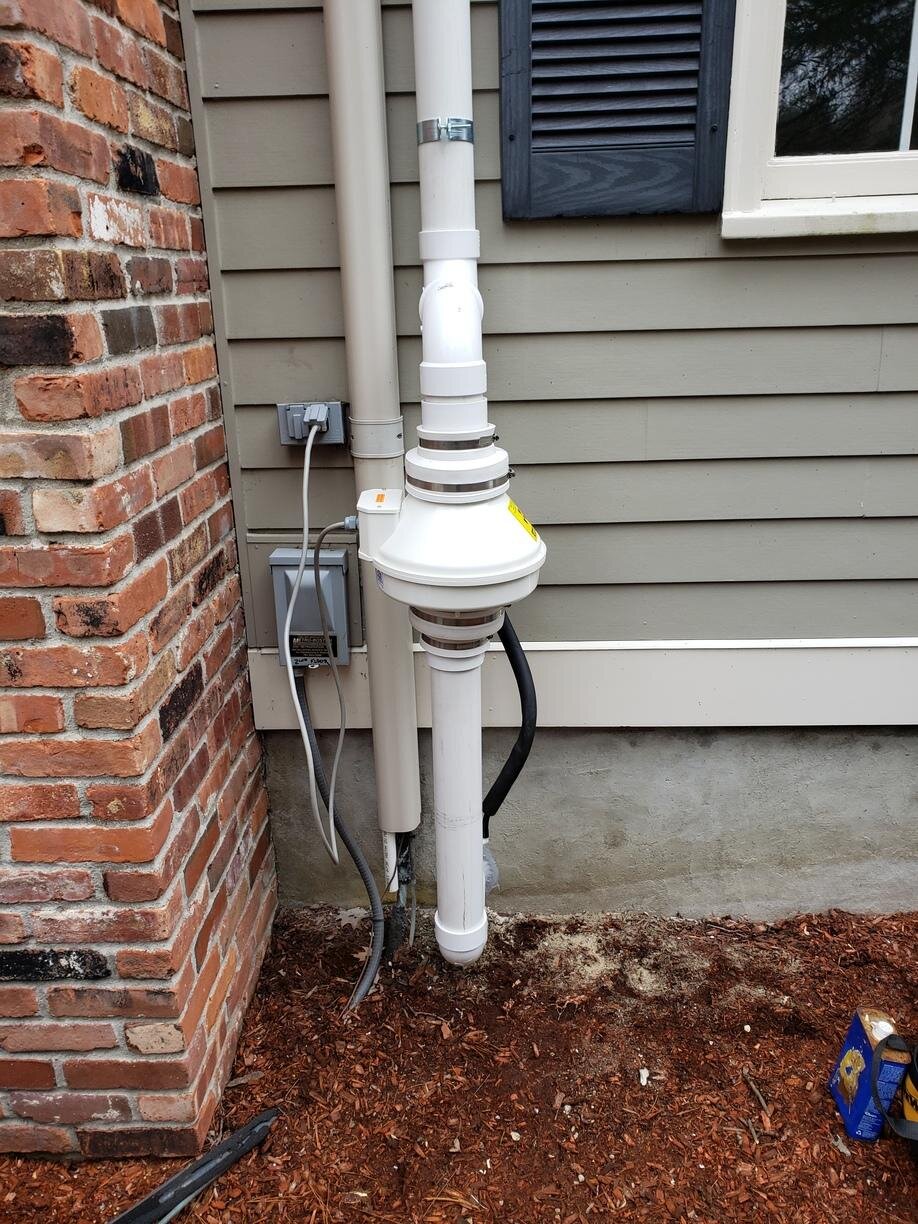Radon in Michigan
What is radon?
Radon is radioactive uranium decay that naturally emits gas from the soil. The gas can accumulate to dangerous concentrations in homes and buildings, putting occupants at risk when exposed over time. The American Cancer Society recognizes radon exposure as the second leading cause of lung cancer behind smoking.
Radon is measured in pCi/L (picocuries/liter) and cannot be detected by natural senses. Byproducts of the gas when it decays include polonium, lead, and bismuth, also impacting lung health when inhaled.
Southeast Michigan is mostly high risk (Zone 1-2)
The US Environmental Protection Agency (EPA) created a comprehensive radon map that shows radon concentrations across the US. Bedrock geology, glacial geology and climate impact the level of radon in a given region. Homes in cooler climate regions can be more susceptible to radon inhalation when windows are sealed and outside airflow is limited.
The map categorizes level of radon concentration by zone, with color indicating severity.
Red = Zone 1 (high risk > 4.0 pCi/L)
Orange = Zone 2 (2-4 pCi/L)
Yellow = Zone 3 (low risk < 2 pCi/L)
Zones are evaluated based on predicted averages. Radon levels can vary building to building, so it cannot be assumed that a home has a given radon level until proven with a verifiable test.
Zone 3
These counties are categorized as the lowest risk, with predicted average indoor radon screening levels less than 2 pCi/L. Some Michigan counties in Zone 3 include Wayne, Macomb, St. Clair, and Huron.
Zone 2
Counties with predicted average indoor radon screening levels from 2 to 4 pCi/L. Zones in this category include Oakland, Livingston, Monroe, Lapeer, and Genessee.
Zone 1
Counties with predicted average indoor radon screening levels greater than 4 pCi/L. Washtenaw, Jackson, Hillsdale, and Lenawee are among the Zone 1 regions in southeast Michigan.
How to test home radon levels
The only way to know if your home has radon is to use a verified testing device. Radon can be tested using a variety of sample collection methods. Most at-home kits are sent to a laboratory for analysis, though some devices can provide results on the device itself once the sample is collected.
The EPA recommends homes test the lowest inhabitable level of a home. The sample should be deployed for enough time that the radon has accumulated enough to analyze. Depending on the type of device, a radon test should take 48-72 hours. The test should not exceed more than the half-life of radon decay (3.8 days).
Examples of home radon tests
Charcoal liquid scintillation
Activated Charcoal
Alpha Track
Electret Ion Chamber
Tests should be placed 20 inches off the ground, 3 feet from a door or window, and 4 inches away from furniture or other items.
Once the sample is collected, seal the test and mail to the pre-set laboratory for analysis. Measurement analysts will run the test through a scanner that measures alpha, beta and/or gamma rays that result from radon and RDPs (radon decay products).
Test kits are available at hardware stores or online and results are typically sent via email shortly after received.
How to reduce radon levels
The EPA recommends mitigating a home when radon concentration exceed 4.0 pCi/L. A radon mitigation system removes radon gas before it can become breathable. Specialty vacuum and piping systems are installed into the home’s sump pump beneath the foundation to remove gas and continuously re-route to open air.
Pipe entry to sump pump
Radon Fan, pipe routes sump to exterior vent
Choosing your radon mitigation installers
Installing a radon mitigation system is the first action to creating a safer, healthier environment in your home. The second is choosing the right mitigation company to successfully install the system. We recommend evaluating the below criteria among service providers.
Depth of experience
The complexity of the radon mitigation depends on the year the home was built and the foundation type. Having a mitigation company with experience in varying home builds is important to understand the solution needs.
NRSB and NRPP certifications
Use NSRB’s online search tool to verify your mitigation installer’s certifications.
Availability for system maintenance
Because Radon Systems have to run continuously, the motor may require servicing over time. Plan ahead for the long-term implications with workmanship warranty.
Peak Environment is certified with the National Radon Safety Board and National Radon Proficiency Program and has installed thousands of radon mitigation systems over a span of 20+ years.
Watch radon and vapor intrusion indoor air pollution overview








